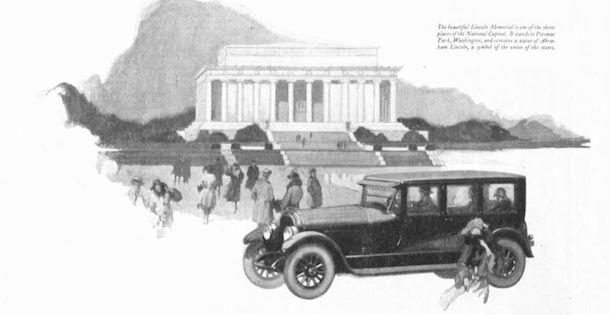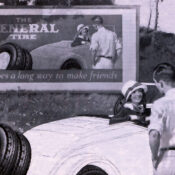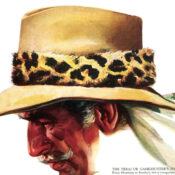After decades of planning, budgeting, and construction, the Lincoln Memorial was finally dedicated on May 30, 1922. Americans were proud of this beautiful monument and eager to visit it. Companies wasted no time using the memorial to advertise a connection to their products. These advertisements appeared in the Post between 1921 and 1948 and hawked everything from tires to tombstones.
The Lincoln Memorial has taken on additional layers of meaning since the 1920s. As Jay Sacher noted, “the memorial is cultural shorthand for both American ideals and 1960s radicalism.” It is rarely seen in ads anymore. The memorial still makes regular film appearances, an easy stand-in for Heavy Symbolism. However it is used, the Lincoln Memorial will continue to transcend the banal appropriations of its image.
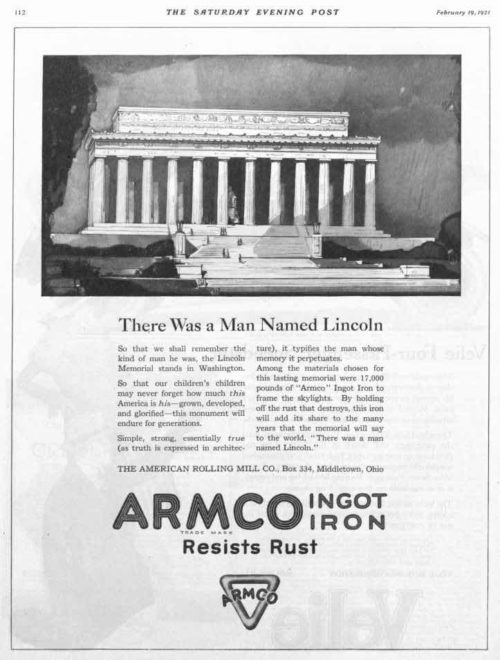
February 19, 1921
Click to Enlarge
Armco iron was used in the construction of the Lincoln Memorial, a fact that warranted several full-page ads in the Post.
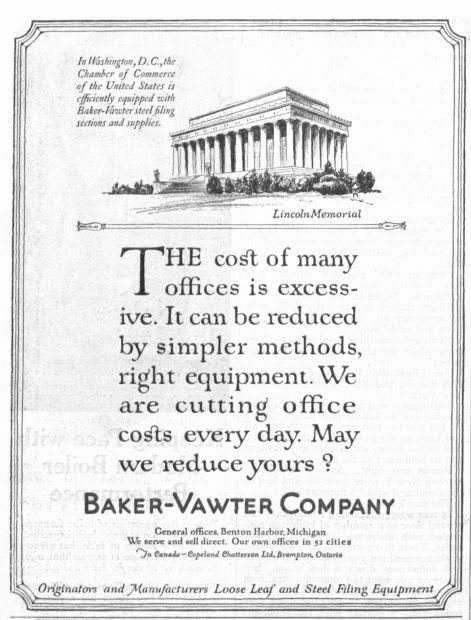
October 28, 1922
Click to Enlarge
We’re not sure what the Lincoln Memorial had to do with a company that made ledger sheets and looseleaf binders, but they seemed to hope that the monument would lend them an air of dignity. The Lincoln Memorial certainly didn’t represent “cutting office costs,” as its construction costs in today’s dollars were north of $40 million.
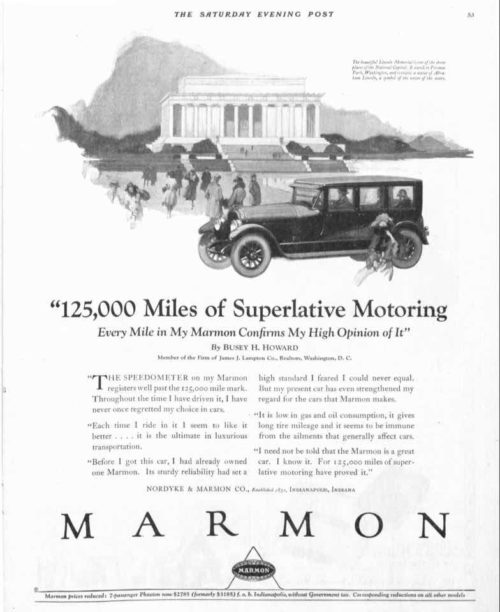
December 1, 1923
Click to Enlarge
Marmon made cars in Indianapolis from 1902-1933. The Lincoln Memorial serves as the majestic backdrop to emphasize “the ultimate in luxurious transportation.”
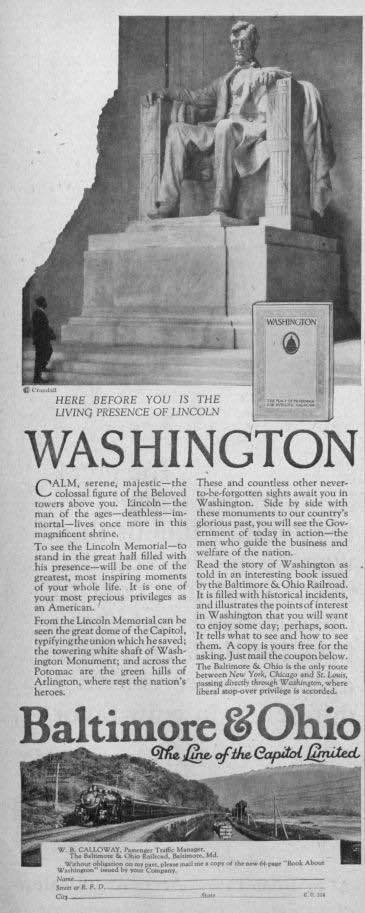
March 14, 1925
Click to Enlarge
Many Americans wanted to visit this new monument, but how were they to get there? The Baltimore & Ohio Line, of course – the “only route New York, Chicago and St. Louis, passing directly through Washington, where liberal stop-over privilege is accorded.” (No such privileges for the conservatives?)
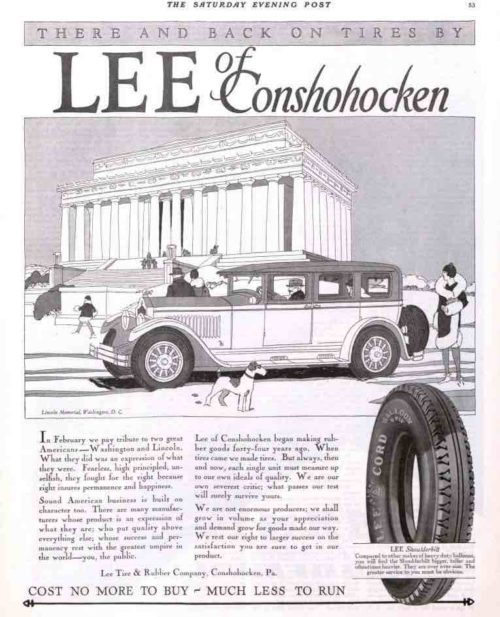
February 25, 1928
Click to Enlarge
Of course, if you’d rather drive than take the train, you’ll need a good set of tires to get you there.
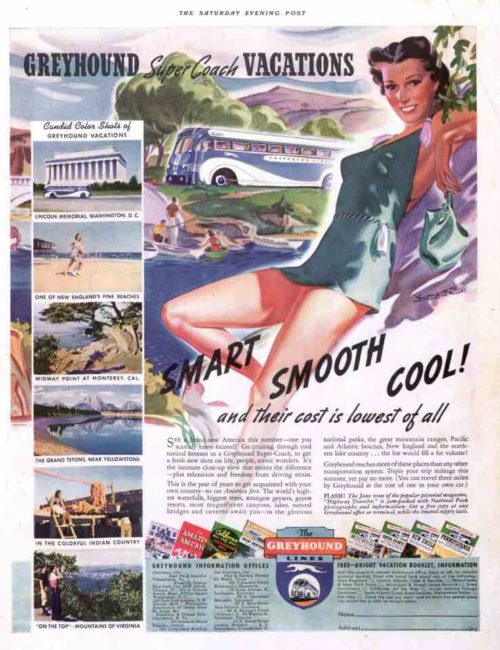
June 4, 1938
Click to Enlarge
The Lincoln Memorial takes a backseat to this green-suited come-hither swimmer in an age where sex was starting to trump integrity as a selling point.
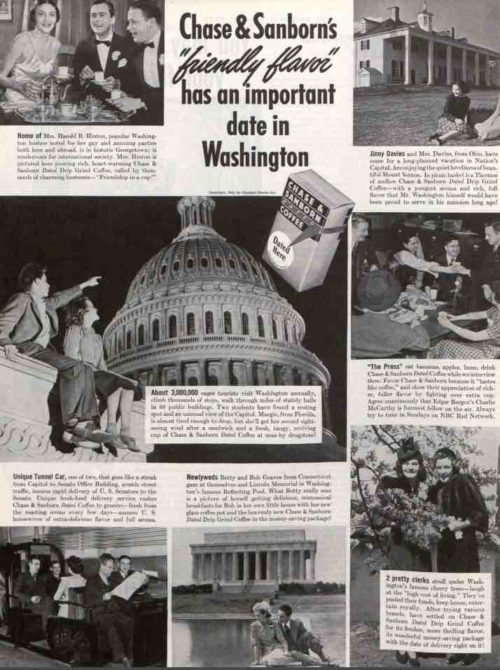
May 4, 1940
Click to Enlarge
The Lincoln Memorial once again gets low billing. In case you can’t read the caption, it says, “Newlyweds Betty and Bob Graves from Connecticut gaze at themselves and the Lincoln Memorial in Washington’s famous Reflecting Pool. What Betty really sees is a picture of herself getting delicious, economical breakfasts for Bob in her own little house with her new glass coffee pot and the heavenly new Chase & Sanborn Dated Drip Grind Coffee in the money saving package!” Our research was unable to confirm if that’s what Betty was actually seeing.
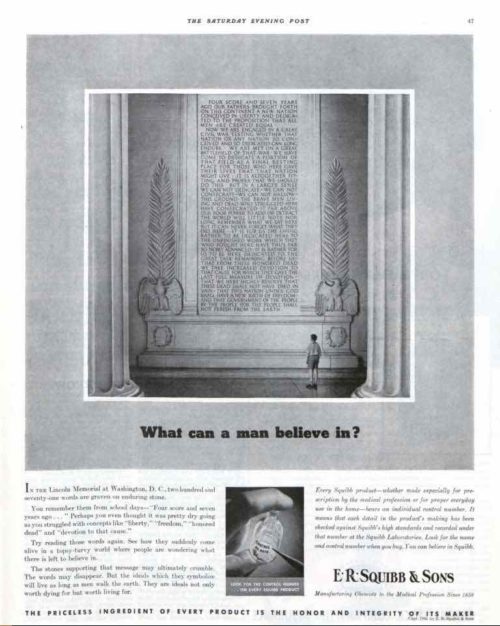
January 11, 1941
Click to Enlarge
Pharmaceutical manufacturer Squibb offers inspiring words – “The stones supporting that message may ultimately crumble. The words may disappear. But the ideas which they symbolize will live as long as men walk the earth.” (Buy our drugs.)
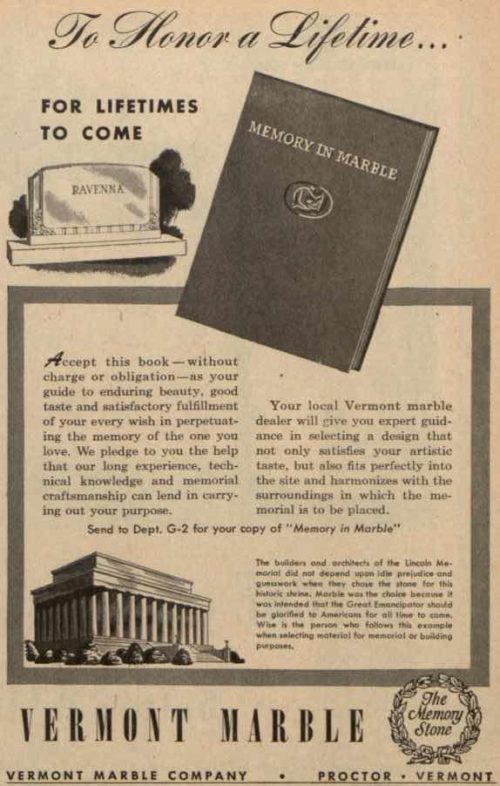
May 1, 1948
Click to Enlarge
The argument is that the Lincoln Memorial is made out of marble, so your tombstone should be, too. “Wise is the person who follows this example when selecting material for memorial or building purposes.”
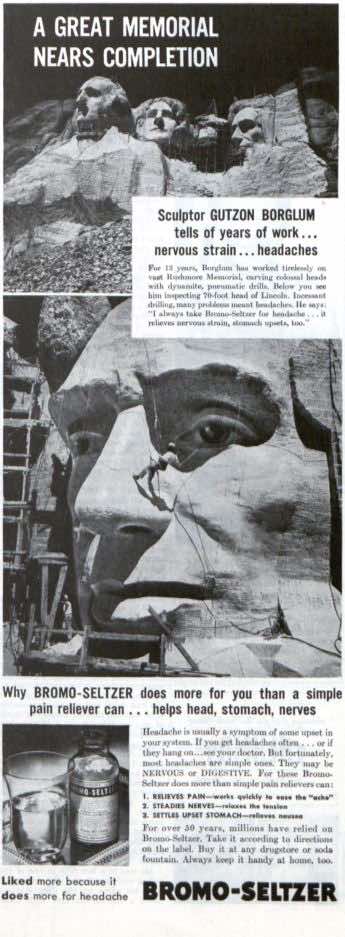
August 31, 1940
Click to Enlarge
We threw in this ad just to show that the Lincoln Memorial wasn’t the only monument used in the service of advertisers. The sculptor of Mt. Rushmore ostensibly took Bromo-Seltzer for his headaches. Early versions of this medicine contained sodium bromide, a tranquilizer. That may not have been such a good idea when he was dangling off the side of Lincoln’s nose.
Become a Saturday Evening Post member and enjoy unlimited access. Subscribe now
